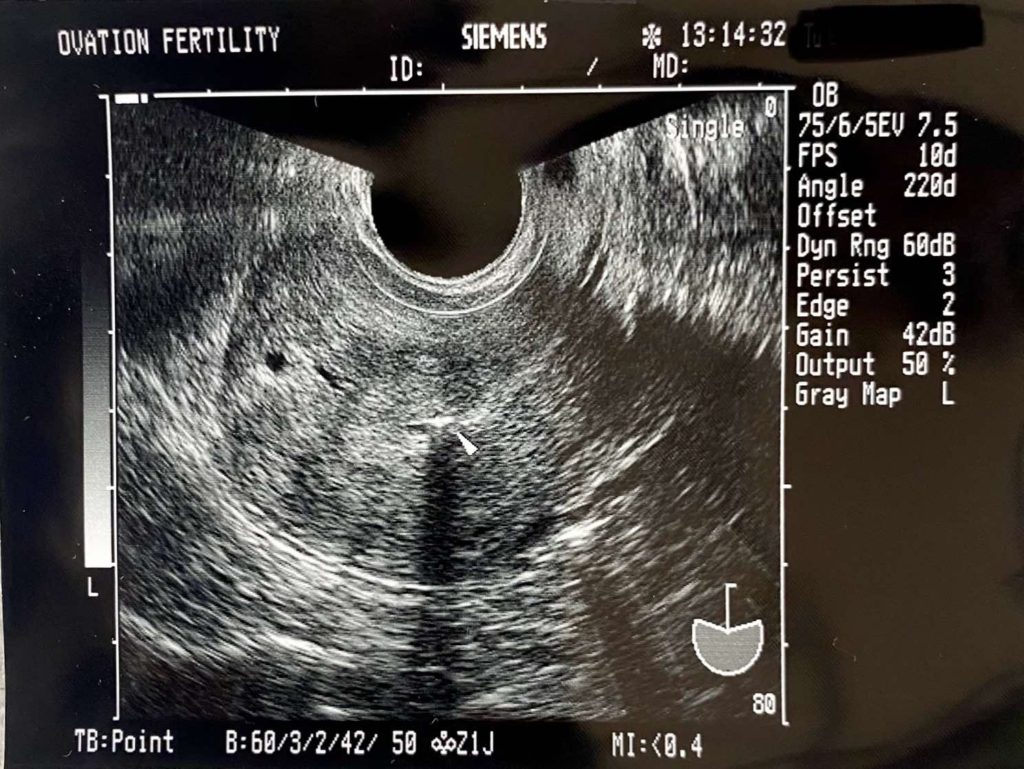You can make this the year you get pregnant and deliver a healthy child.
With the proper actions, step-by-step, you could have an excellent chance of realizing your goal.
It starts with understanding the normal sequence.
Most couples start out on their fertility journey with the simple non-medical strategy of trying on their own. More than half of couples need go no further than this step and they will succeed, usually within a year.
For others, they will end up needing some sort of medical help, either basic and “low-tech” assistance or advanced “high-tech” assistance.
The keys are to decide how long you will stick with one method before advancing to the next and to set a concrete deadline for action.
If you want to get started getting pregnant without a fertility doctor, here’s a basic starting point.
Explore optimizing your lifestyle: The five pillars are food, sleep, exercise, mental calm and minimizing harmful habits.
Optimize timing around the peak fertility window.
Set a deadline at which time, if you’re still not pregnant, you will give up on the current strategy and try something new.
CASE #1:
MIKE and ASHLEY are both 34 years old and have been married for four years. In their first two years of marriage, they were not ready to have children yet, so they practiced careful contraception with birth control pills.
Two years ago, they made the decision that they were ready. They stopped the birth-control pills. They did not obsess about getting pregnant, but rather, they went about their lives with the attitude of “whatever happens, happens”. Neither of them had been involved with any pregnancy in their lives, but they thought themselves to be relatively healthy and did not expect any problem.
Six months after they stopped contraception, there was still no pregnancy.
Ashley began to explore information on the internet. Nothing obvious came to mind. She had regular menstruation every month. Their frequency of trying was 2-3x per week. She asked Michael’s opinion about whether or not they should seek help. His answer was no. They should just keep trying. After all, they had other pressing matters in their life, with her goal towards promotion in her job and his having to attend to an ailing mother whose health was deteriorating.
One very important thing they did was they SET A DEADLINE. They both agreed that if a year and a half passed without pregnancy, they would consider some options. By doing, so and making it clear and concrete going as far as both setting reminders on their calendars, they felt at peace.
After their 15th month of trying non-medically, about 3 months before their self-imposed deadline was up, Ashley was late and did a urine test which was positive. They went on 8 months later to deliver a healthy baby girl.
CASE #2
JESSICA and CHRISTOPHER met when they were 35 and 39 respectively. Three years later, they were married. They both felt an urgency to get pregnant because of their age. After the wedding, they never used any birth control and started proactively trying right away. This consisted of tracking her ovulation with an app and making sure to be extra active (every 2 days) surrounding the fertile period. They also set a deadline, but theirs was more ambitious. They decided that if they were not pregnant by six months, they would consider seeking professional help. This was partially due to their age and the fact that they both strongly wanted more than one children.
After six months had passed, there was still no pregnancy. They consulted a fertility doctor who came highly-recommended by Jessica’s best friend. They met with the physician and had a helpful half-hour conversation. One of the tasks was for Chris to get a sperm test. It was found that his count was 35 million per ml, which is low, but barely in the normal range. They were offered the chance to do inseminations and they agreed right away. On their first cycle of IUI (intrauterine insemination), they conceived and went on to delivery a healthy baby boy.
Could they have gotten pregnant on their own if they would have patiently persisted another six months? Perhaps. Perhaps not. They stuck to their deadline, took action and got a good result.
CASE #3
AMANDA and MATTHEW
At age 27, when they got married they didn’t have a strong preference for having a child, but they also didn’t have a strong wish NOT to have one. So they didn’t use overt birth control, but they also didn’t meticulously time things. They were having intercourse about twice a week based on when they were in the mood. After six month, Amanda realized that time had passed and they hadn’t gotten pregnant, and she learned about the concept of setting a deadline. Because their desire to be pregnant was not that desperate, she mentally set a deadline of one more year after which Matthew agreed to quit smoking and/or to get a sperm test.
Another year passed with no pregnancy. Matthew got a sperm test which showed less than 1 million count per ml. After speaking with a doctor, they realized they had been wasting their time all these years. Even though they still weren’t ready to proceed with medical treatment at least now, they had a clear answer on what their chances were. As a result they decided to accelerate their life plans so as to be able to afford and do treatment in two more years.
TAKE HOME MESSAGE:
Setting a concrete deadline can help lessen the sense of helplessness or confusion regarding trying to conceive.

